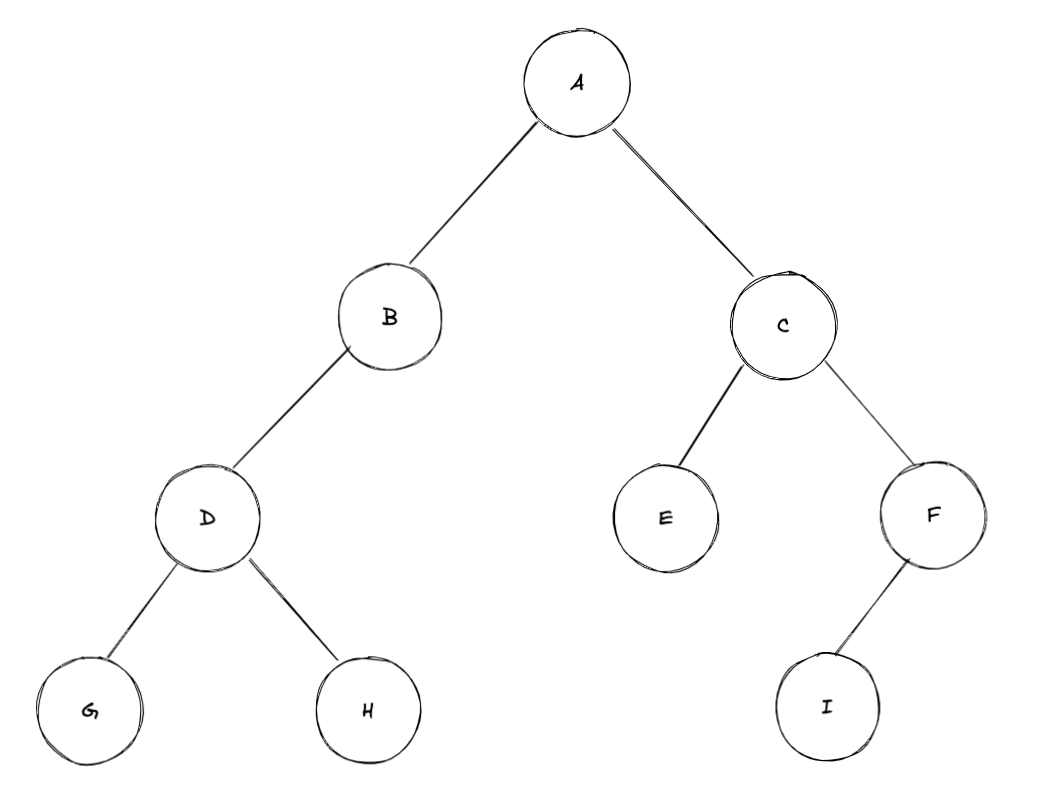LeetCode 笔记 2:Binary Tree Lowest Common Ancestor
详解二叉树最低公共祖先(LCA)问题的概念和递归解法,包含多个实例分析
Loweset Common Ancestor #
From wikipedia Lowest common ancestor - Wikipedia:
In graph theory and computer science, the lowest common ancestor (LCA) (also called least common ancestor) of two nodes v and w in a [tree]( https://en.wikipedia.org/wiki/Tree_ (graph_theory) “Tree (graph theory)") or directed acyclic graph (DAG) T is the lowest (i.e. deepest) node that has both v and w as descendants, where we define each node to be a descendant of itself (so if v has a direct connection from w, w is the lowest common ancestor).
概念很简单,举几个例子:

- A 和 B 的 LCA 是 A;
- B 和 C 的 LCA 是 A;
- D 和 E 的 LCA 是 A;
- E 和 I 的 LCA 是 C;
- D 和 F 的 LCA 是 A;
- G 和 H 的 LCA 是 D;
- C 和 F 的 LCA 是 C;
思路 #
大部分的二叉树题目,首先想到的是递归的解法,这是因为二叉树的数据结构特点所致:我们只知道当前节点和当前节点的相连节点的信息,而不知道全局信息。
那么,如何求解给定的任意另个 Node X 和 Y 的 LCA 呢?思路是这样的:
- 我们从下往上,遇到
X或者Y的时候,将它们返回给上层;遇到非X或者Y的节点则返回null - 当上层 Node 拿到两个非空节点是,当前节点即为
LCA,将当前节点返回 - 当上层 Node 拿到一个空节点一个非空节点时,那个非空节点要么是
LCA, 要么是X或者Y, 我们继续将非空节点返回给上层处理即可
因为对于任意给定的两个节点 X 或者 Y 来说,它们的 LCA :
- 要么是
X或者Y其中的一个,这表示其中一个节点位于另一个节点的子树之中; - 要么是
X或者Y的上层节点,这表示X和Y都位于它们的LCA子树之中。
而我们的算法在递归的过程中,至多只会遇到一次,左子树返回和右子树返回均不为空的情况;否则,我们将非空节点返回即可,该非空节点即为题目所求的 LCA :
class Solution {
public TreeNode lowestCommonAncestor(TreeNode root, TreeNode p, TreeNode q) {
if (root == null) {
return null;
}
if (root == p || root == q) {
return root;
}
TreeNode left = lowestCommonAncestor(root.left, p, q);
TreeNode right = lowestCommonAncestor(root.right, p, q);
if (left != null && right != null) {
return root;
} else if (left != null) {
return left;
} else {
return right;
}
}
}
例题 #
Example 1
1123. Lowest Common Ancestor of Deepest Leaves

这道题是找出深度最深的所有叶子结点的 LCA ,只需分解成两个步骤:
- 找到最大深度(
DFS) - 找到最大深度叶子结点的
LCA
最大深度的叶子结点可能有多个,但这不妨碍我们算法的步骤和正确性:
- 对于最大深度的叶子结点,返回自身;
- 对非最大深度的节点,如果左子树返回和右子树返回均不为空,说明该节点为
LCA,返回自身;否则返回左子树和右子树的非空返回;
解法:
class Solution {
private int deepestDepth = 0;
public TreeNode lcaDeepestLeaves(TreeNode root) {
if (root.left == null && root.right == null) {
return root;
}
findDeepestDepth(root, 0);
return lca(root, 0);
}
private TreeNode lca(TreeNode root, int depth) {
if (root == null) {
return null;
}
TreeNode leftRet = lca(root.left, depth + 1);
TreeNode rightRet = lca(root.right, depth + 1);
if (depth == deepestDepth) {
return root;
}
if (leftRet != null && rightRet != null) {
return root;
} else if (leftRet != null) {
return leftRet;
} else {
return rightRet;
}
}
private void findDeepestDepth(TreeNode root, int depth) {
if (root == null) {
return;
}
deepestDepth = Math.max(deepestDepth, depth);
findDeepestDepth(root.left, depth + 1);
findDeepestDepth(root.right, depth + 1);
}
}
Example 2
235. Lowest Common Ancestor of a Binary Search Tree

这道题目的区别是,数据结构换成了 BST,根据 BST 的性质我们可以,对于任意节点 X 和 Y 来说,它们的 LCA 一定满足: X.val <= LCA.val && LCA.val <= Y.val 。
我们只要从上到下,递归地寻到满足这一布尔条件式的节点即可:
- 如果
LCA.val < X.val && LCA.val < Y.val,那么当前节点的值太小,我们去右子树中递归寻找; - 如果
LCA.val > X.val && LCA.val > Y.val,那么当前节点值太大,我们去左子树中递归寻找; - 否则,当前节点值落在了
X.val和Y.val之间,说明当前节点即为我们要找的LCA
class Solution {
public TreeNode lowestCommonAncestor(TreeNode root, TreeNode p, TreeNode q) {
if (root.val > p.val && root.val > q.val) {
return lowestCommonAncestor(root.left, p, q);
} else if (root.val < p.val && root.val < q.val) {
return lowestCommonAncestor(root.right, p, q);
} else {
return root;
}
}
}